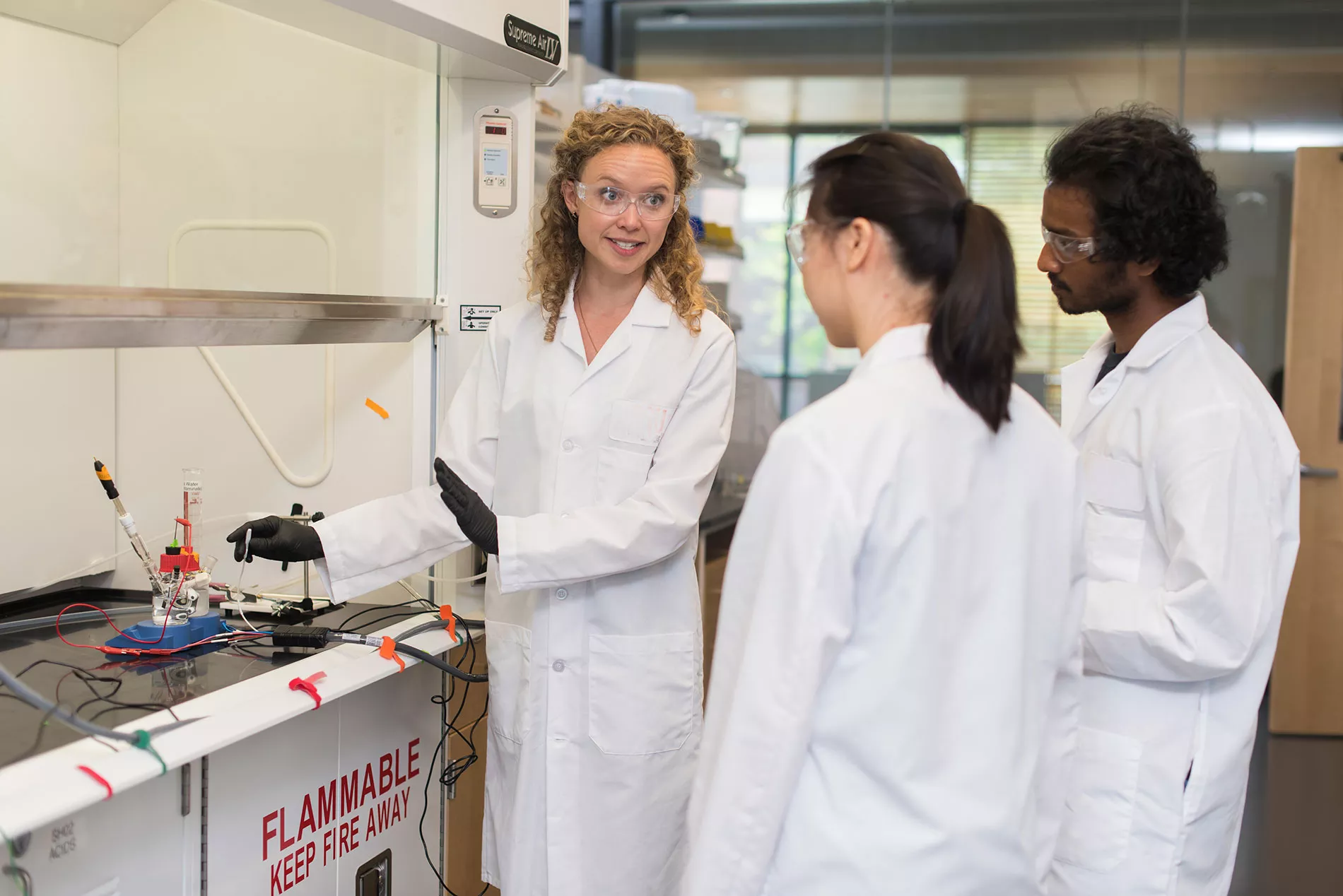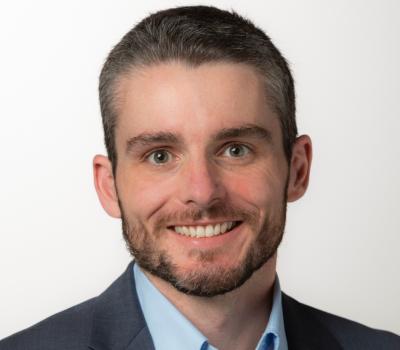Our Story
Every year, we take great pride in showcasing our school's achievements. We share the most compelling stories, exciting statistics, and notable new hires that have contributed to our school's success. From groundbreaking research to innovative teaching methods, we celebrate the outstanding accomplishments of our students, faculty, and staff. Whether you're a prospective student, a current member of our community, or simply interested in learning more about us, join us in celebrating the Iincredible impact of our school.
Partnering with HP to develop microfluidic diagnostic devices
Following a successful seed grant initiative with Oregon State, HP Inc. recently set up a $2 million research fund to support multiple projects within the College of Engineering at the intersection of life sciences and microfluidics.
“The HP-OSU seed grant initiative has been the most successful corporate-university engagement program I’ve ever seen,” said Paul Benning, chief technologist of HP’s 3D Print and Microfluidics. “Our long history of research engagements with OSU gives confidence that we will be successful with this research fund.”

Elain Fu, associate professor of bioengineering, is leading one of the first of these projects. With collaborators at HP, she plans to develop novel microfluidic technology to enable at-home and point-of-care medical diagnostic tests with sensitivity approaching that of lab-based PCR tests.
The lateral flow test is a standard format for quantifying markers in human fluids that indicate health status for a variety of conditions, including pregnancy, as well as certain chronic diseases and infectious diseases like COVID-19. Such tests are particularly well-suited for use in lower- resource, point-of-care settings. However, conventional lateral flow tests are not suitable at the lower limit of detection targets. In addition, such tests currently do not enable the multistep reagent manipulations characteristic of high-sensitivity capture and detection strategies. The focus of Fu’s one-year project is to combine HP’s geometric flow routing technology with an optimized capture and detection strategy for nucleic acid targets in a nitrocellulose-based lateral flow strip format.
“With this technology, we’re looking to narrow the gap between highly sensitive laboratory PCR tests and what have been lower sensitivity point-of-care and at-home tests,” Fu said.
Catalysts for more efficient, sustainable nitrate-to-ammonia conversion
Kelsey Stoerzinger, assistant professor of chemical engineering, has been granted an award from the U.S. Department of Energy’s Early Career Research Program. She will use the five-year, $750,000 prize to develop a deeper understanding of electrochemical processes used to convert nitrate into ammonia, and to design and test catalysts that target this reaction.
Ammonia is among the most widely used chemicals in the world. But industrial-scale ammonia production relies on the Haber-Bosch process, in which hydrogen and nitrogen are combined at high temperatures and pressures. The practice requires enormous amounts of energy and produces huge volumes of carbon dioxide.
Meanwhile, nitrate from untreated wastewater and agricultural runoff overwhelms streams, rivers, and groundwater in many areas of the country. Ingesting excessive nitrate has been linked to a number of serious health risks in humans, while an overabundance in aquatic ecosystems can devastate plant and animal life.
Stoerzinger, who won an early career award from the National Science Foundation in 2021, will investigate an electrochemical option for ammonia synthesis in which an electric current is passed through a device containing nitrate-contaminated water.

Widespread implementation of an electrochemical approach will be feasible only with catalysts that select for the reaction that produces ammonia rather than a competing reaction that produces hydrogen from the water molecules. Competing reactions can occur when the same starting materials combine to create undesired products.
Stoerzinger’s goal is to identify catalytic materials that result in high yields of ammonia. “Ideally, they should be efficient, so that every electron flowing through the water creates ammonia, not hydrogen, even at low energy input,” she said.
Improving energy storage efficiency
A study led by Oregon State’s Nick AuYeung, associate professor of chemical engineering, and doctoral student Fuqiong Lei offers a way to boost the efficiency of an energy storage technology that could play an important role in a global transition to renewable energy.
Collaborating with researchers at Mississippi State and Michigan State universities, AuYeung and Lei’s team developed a mathematical model to test the potential of thermochemical energy storage. Using compressed air as an energy storage mechanism, they discovered that efficiency can be enhanced via reversible chemical reactions in which heat is thermochemically recovered. A main advantage of thermochemical energy storage over other methods is higher energy density, achieved by trapping heat in the form of chemical bonds, AuYeung said.
The research was supported in part through OSU Advantage, which assists work related to entrepreneurship, intellectual property, and technology transfer.
Formulating a clean-energy future
Zhenxing Feng, associate professor of chemical engineering, contributed significantly to the development of a catalyst that could lead to mass adoption of clean cars powered by direct- ethanol fuel cells.
“Combustion engines produce enormous amounts of carbon dioxide,” Feng said. “To achieve carbon-neutral and zero-carbon-emissions goals, alternative energy conversion devices using fuel from renewable and sustainable sources are urgently needed. Direct-ethanol fuel cells can potentially replace gasoline- and diesel-based energy conversion systems as power sources.”
Working with colleagues at Oregon State and the University of Central Florida, Feng found that adding fluorine atoms to palladium-nitrogen-car-bon catalysts led to several positive effects — including keeping the pow-er-dense cells stable for nearly 6,000 hours — and solved three key problems associated with the fuel cells: low efficiency, high cost, and chemical toxicity.
In other collaborative research, Feng described processes for designing catalysts that will facilitate far more efficient and less expensive hydrogen production from water than is possible with currently available commercial catalysts.
The findings are significant because hydrogen production is important for many aspects of daily life, such as fuel cells in cars and manufacturing important chemicals like ammonia, according to Feng. “It’s also used in the refining of metals, producing human-made materials such as plastics, and a range of other purposes,” he said.
736
Undergraduate Students
25
Masters Students
75
Doctoral Students
33
Academic Faculty
8
Early Career Awards
$3.2M
Scholarship Support
$10.2M
Research Funding
Bacterial beads clean up groundwater
Lew Semprini, university distinguished professor of environmental engineering, is leading a team of Oregon State researchers investigating bioremediation techniques to address groundwater contaminants, specifically volatile organic compounds. Backed by a $1.4 million grant from the National Institute of Environmental Health Sciences, Semprini’s team aims to develop and test hydrogel beads containing bacteria that break down pollutants in groundwater into smaller, more benign molecules.
“Common remediation techniques, such as pump-and-treat, are not sustain-able for treating contaminant mixtures that slowly diffuse from low permeability zones in the subsurface,” Semprini said. “These issues highlight the need for long-term, passive, and more economical remediation techniques.”
Surveying superbugs in sewage and soil
Tala Navab-Daneshmand, associate professor of environmental engineering, has devoted the past decade of her career to studying environ-mental pathogens and seeking effective ways to stem the spread of disease.
Navab’s research primarily examines the inactivation, growth, persistence, and regrowth of enteric antibiotic-resistant bacteria in waste-water treatment facilities and post-treatment biosolids. In 2018, Navab was a contributing author of a landmark paper, published in Environmental Engineering Science, advancing an interdisciplinary approach to the design of systems to combat antimicrobial resistance.
Over the past year, Navab has led four studies characterizing the ecology of resistance properties of E. coli in Oregon wastewater systems and examining the prevalence and persistence of antibiotic-resistant bacteria in agricultural soil irrigated with wastewater and amended with biosolids. Findings from these studies can inform interventions to reduce sickness and death from harmful bacteria in the food supply.
New 30-year climate normals
Oregon State University’s new maps of 30-year U.S. climate “normals” show the area east of the Rockies is getting wetter, the Southwest is getting drier, and temperatures are inching upward — with daily lows rising faster than daily highs.
“When we publish the new normals every 10 years, we’re taking away one decade from a 30- year period and adding another, which means the changes we see are subtle,” said Chris Daly, senior research professor of geospatial climatology and the founding director of Oregon State’s PRISM Climate Group. “But temperatures are definitely creeping up, and daily minimum temperatures are increasing faster than the maximums.”
PRISM, which stands for Parameter-elevation Regressions on In- dependent Slopes Model, was developed by Daly in 1991 when he was a Ph.D. student at Oregon State. The 30-year normals are the climate group’s signature product.
PRISM data sets are used by many government agencies, including NOAA, the EPA and NASA and the departments of Defense, Energy and the Interior, Daly said. The private sector relies on PRISM data too, in a broad range of applications that include agriculture, hydrology, engineering, ecology, and economics.
This most recent update of the normal was sponsored by the Department of Agriculture’s Risk Management Agency, which oversees the federal crop insurance program.
Extending the shelf life of living tissues
Adam Higgins, associate professor of bioengineering, led a team of Oregon State researchers in an effort to improve the cryopreservation of tissues and organs.

Their study, published in Biophysical Journal, employs a new mathematical model to examine tissue vitrification, a cryopreservation process that enlists chemicals called cryoprotectants to prevent the formation of damaging ice crystals.
Vitrifying tissues may also have applications in stem cell–based regeneration. Through cryopreservation, tissues could be stored until transplantation, and organ donations could be preserved until matches are found. Likewise, vitrification can extend the utility of organ-on-a- chip devices, used to forecast drug responses in people.
“Our new model opens the door to extending our previous mathematical optimization approach to designing better methods for the cryopreservation of various tissue types,” Higgins said. New hire
New Hire
Lucas Ellis
Assistant Professor Chemical, Biological, and Environmental Engineering
